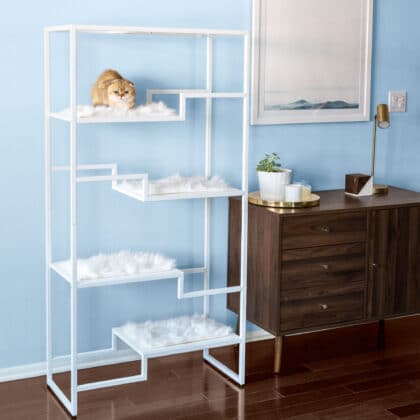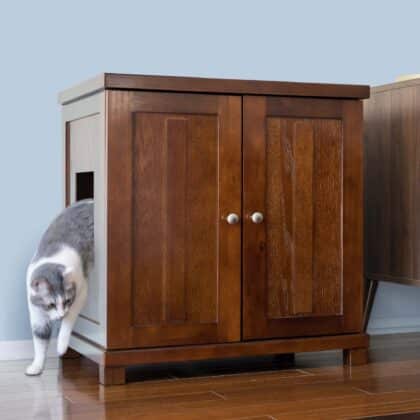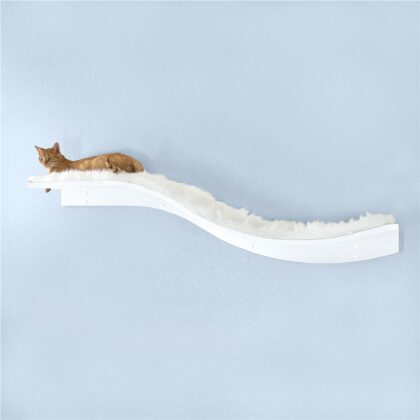
How To Help An Outdoor Cat Adjust to Life Indoors
Outdoor cats that are semi-feral can take a lot of time to adjust to life indoors. However, many people don’t realize that a lot of outdoor cats once lived indoors and aren’t really feral at all. Either way, bringing an outdoor cat inside will take more time and patience than a kitten who has been around humans since birth. Navigating the road ahead with a not-so-happy feline in your home can be stressful for everyone. To truly help an outdoor cat adjust to life indoors, follow the tips below. A better, more comfortable, living situation will soon follow for you and your feline companion.
Get To Know The Cat’s History
What’s in the past is the past, so why worry about that now? Gaining as much information as you can and understanding the cat’s previous living situation is ideal. It can give you a better handle on how to transition them to indoor life. If the cat used to live inside of a home but is now outdoors, the process will be much simpler and quicker. If the cat has never interacted with people before, know it will take time. Every cat is different and some may take longer to get used to indoor life than others.
Knowing the cat’s tolerance level and prior history with people will also make this process easier. A gradual introduction to the indoors is best if possible. If you are bringing the cat inside because the area is unsafe or they are injured then you should bring the cat indoors as fast as possible. That way, you can decide how to best transition the cat to indoor life.
Set Up A Safe Space For The Cat
More than likely, the new kitty is going to be scared at first. To help make this transition smoother, it’s always better to keep your new companion in one area at first. A smaller room, such as a spare bedroom or large bathroom, is usually best for the cat to start out in. The less foot traffic to that area, the better. You will also want to spend time with your new cat every day. However, you don’t want it to be scary for him or her. If the cat is scared, just calmly sitting in the room with him or her is a great first start to a happy and healthy relationship. Depending on how much human interaction he or she has had, you can talk calmly or read to them. Always keep the interactions relatively short at first and slowly build up the time spend together as the cat gets more comfortable. Some positive signs from the cat are if they take their eyes off of you, give you slow blinks, or move around a lot. These are all signs that they’re trusting you more and are relaxed around you. Spreading out the cat’s items in this small space will give them a chance to explore without having to stray too far. Also, make sure to keep the cat’s food and water as far away from their litter box as possible.
Related: Things to Consider Before Getting An Apartment Cat
Make Sure The Cat is Comfortable
This room will prove to be the cat’s safety net. Ensure that the space is comfortable, calm, and quiet enough for them to fully adjust and eventually explore. Having an enclosed cat bed for the cat to hide in can help the cat feel safe in the room. If you have anything that the cat had been sleeping on or using previously, that will come in handy as well. Place the item in the room where the cat is so that the cat’s scent is in the room already. This can help them acclimate to the room as well as help them make the connection that this is “home”. Try to avoid changing out these items unless they really need to be washed. This will help your new kitty feel more comfortable.
Make sure to include a scratching post as well. This is always a necessity for any cat but even more so if the cat won’t let you clip its nails. If the cat seems to be adjusting well, you can use toys to help them get comfortable with you. Wand toys will get the attention of most cats, will engage their hunting skills, and will keep your fingers scratch-free in the meantime
Use Food To Help An Outdoor Cat Adjust
A great way to build trust with your new cat companion is through the use of food. Sticking to a regular feeding schedule will help your cat build a routine. At first, simply feed the cat and leave, giving him or her an opportunity to eat without feeling any pressure. It will show that you are bringing them something tasty with no strings attached. As he or she gets more relaxed, you can join in during meal times. You can even put some meat-flavored baby food on a spoon for the cat to lick or give them some treats. Depending on the cat’s comfort level, it may be best to dish out the treats when you leave. Giving them treats reinforces to them that you aren’t the bad guy after all. Keep in mind that this works best when it’s not followed by any action. Don’t immediately try to pet the kitty after tossing a few treats their way. This is simply to build trust and a relationship and to let the cat see you as a friend. As the cat learns you’re not the enemy, he or she will become more at ease and will loosen up. The more the kitty relaxes around you, the more you’ll get to see the cats personally blossom. You may even get in a pet or two!
Staying Calm Will Help Keep The Cat Calm
Remember that cats are both the prey and the predators in their outside kingdom. Hopefully, you and your new feline will be BFFs one day, but if the cat hasn’t been around humans too much that probably won’t be their first impression of you. Remember to avoid direct eye contact with your new feline, as this can be a sign of aggression or stalking. Any fast movements you make, such as getting up or reaching for something, can seem like “pouncing” towards the cat. Keeping your voice calm and steady along with your movements can ease the cat’s tension. Doing this on a daily basis will build trust and a strong bond. Cats will slowly blink and close their eyes for a second to show their trust level with you. You can do this back as well to show that you are not a threat; just remember to look slightly away from the cat. Close your eyes slowly, keeping the lids shut for a second or two, and slowly open them back up. Although it can be hard to, keep your hands to yourself until your new feline approaches you first. Building trust means that everything is on the cat’s terms. The friendship you build from this experience will be worth the wait.
Patience Is Key When Trying To Help An Outdoor Cat
Lastly, when trying to help an outdoor cat get used to your new digs, it’s important to know that it takes time. Be patient, and revel in any progress you both make, no matter how big or small. Getting a cat to fully trust you can take months with many little milestones along the way. If your new cat hasn’t been around people at all, it could take even longer. Sometimes, it may take even a year or more for the cat to truly bond with you and feel comfortable. Don’t fret though! All the sights and sounds in a home can be overwhelming to a cat at first, but they will adjust. All this will help them acclimate easier and faster than any pushing or “flooding” can do. Before you know it, your new kitty will be rubbing against your legs and relaxing next to you!










